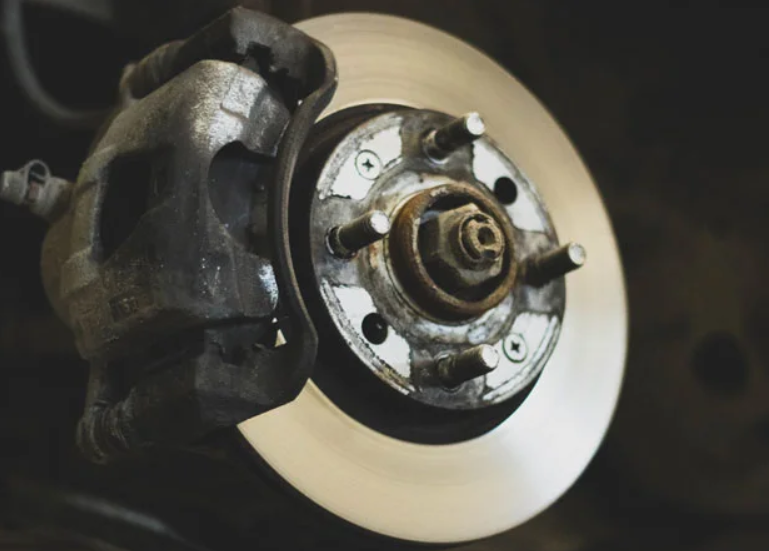The Ultimate Guide to Brake Services: Keeping Your Vehicle Safe on the Road

Maintaining your vehicle’s safety and performance is essential, and brake services play a critical role in ensuring you and your passengers stay protected on the road. Whether it’s daily commutes or long road trips, your vehicle’s braking system is vital for its reliability and safety. This guide explores the importance of brake services, common signs of brake issues, and how to ensure your brakes are always in top condition.
Understanding the Importance of Brake Services
Your braking system is the most crucial safety feature in your vehicle. Properly functioning brakes ensure precise stopping power and control, especially during emergencies. Regular brake services not only keep you safe but also prolong the lifespan of your vehicle. Neglecting this essential maintenance could lead to costly repairs or accidents.
Components of a Vehicle’s Braking System
To understand brake services, it’s helpful to know the components that make up your braking system:
- Brake Pads and Shoes: These create the friction needed to stop the vehicle when pressed against the rotors or drums.
- Brake Rotors and Drums: The surfaces that the brake pads and shoes press against to slow down the wheels.
- Brake Calipers: Hydraulic components that push the pads against the rotors.
- Brake Fluid: The medium through which hydraulic pressure is transferred to engage the brakes.
- Brake Lines and Hoses: Deliver brake fluid to the calipers from the master cylinder.
Understanding these components can help you recognize the significance of regular inspections and timely repairs.
Signs Your Vehicle Needs Brake Services
Recognizing the early signs of brake issues can prevent more significant problems and ensure your safety. Common indicators include:
- Squeaking or Squealing Noises: This often indicates worn-out brake pads.
- Grinding Sounds: If you hear grinding, it could mean your pads are completely worn, and the metal components are rubbing together.
- Vibrations When Braking: This can occur due to warped rotors or unevenly worn pads.
- Soft or Spongy Brake Pedal: This could be caused by air in the brake lines or low brake fluid levels.
- Pulling to One Side: Indicates uneven brake pad wear or issues with the calipers.
- Warning Light on the Dashboard: Modern vehicles are equipped with sensors that alert you to brake problems.
Benefits of Regular Brake Services
Investing in regular brake services offers several advantages:
- Enhanced Safety: Ensures your braking system responds effectively in emergencies.
- Improved Performance: Smooth and efficient braking enhances driving comfort.
- Cost Savings: Identifying minor issues early prevents costly repairs.
- Extended Brake Lifespan: Proper maintenance prolongs the life of brake components.
Types of Brake Services
Brake services encompass a range of maintenance and repair tasks:
- Brake Pad Replacement
Brake pads experience the most wear and tear. Regular inspections ensure timely replacements, preventing damage to rotors. - Rotor Resurfacing or Replacement
Warped or worn rotors affect braking performance. Resurfacing smooths out imperfections, while severe damage necessitates replacement. - Brake Fluid Flush
Over time, brake fluid absorbs moisture, reducing its effectiveness. Flushing and replacing it maintains optimal hydraulic pressure. - Brake Line Repair
Damaged or leaking brake lines compromise the entire braking system. Repairs ensure consistent fluid delivery. - Caliper Servicing
Sticking or malfunctioning calipers can cause uneven braking. Proper servicing ensures they function as intended.
How Often Should You Get Brake Services?
The frequency of brake services depends on factors like driving habits, terrain, and vehicle type. As a general rule:
- Inspect your brakes every 12,000 miles or annually.
- Replace brake pads every 25,000 to 70,000 miles, depending on wear.
- Check brake fluid levels regularly and flush it every two to three years.
Consult your vehicle’s owner manual for manufacturer-specific recommendations.
Choosing the Right Brake Service Provider
Selecting a trusted and experienced mechanic is crucial for maintaining your braking system. Consider the following when choosing a provider:
- Certifications and Experience: Look for ASE-certified technicians with extensive experience in brake repairs.
- Customer Reviews: Online reviews and testimonials offer insight into the quality of service.
- Transparency: Ensure the provider explains the necessary repairs and offers detailed cost estimates.
- Warranty: A reputable service center will stand by its work with a warranty.
Preventive Measures for Long-Lasting Brakes
While regular maintenance is key, adopting good driving habits can also extend the life of your brakes:
- Avoid sudden braking whenever possible.
- Reduce speed before applying brakes.
- Maintain proper tire pressure for even braking.
- Regularly check for unusual sounds or vibrations.
Future Trends in Brake Technology
The automotive industry continues to innovate, improving braking systems for safety and efficiency. Emerging trends include:
- Advanced Driver-Assistance Systems (ADAS): Features like automatic emergency braking enhance vehicle safety.
- Regenerative Braking: Found in hybrid and electric vehicles, this system converts braking energy into electricity to recharge the battery.
- Carbon-Ceramic Brakes: These high-performance brakes offer exceptional durability and heat resistance.
Conclusion
Brake services are integral to your vehicle’s safety and performance. Regular inspections, timely repairs, and proper maintenance keep your braking system reliable, ensuring peace of mind on the road. Don’t wait for signs of trouble—proactive care saves money and protects you from potential hazards.
When it comes to maintaining other essential components like your battery, rely on battery repair experts to keep your vehicle running smoothly. Combining expert care for both your brakes and battery ensures a safe and hassle-free driving experience.








